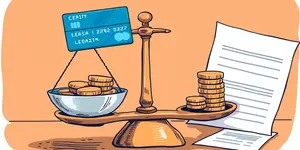
Every decision you make around borrowing shapes your financial journey and levels of freedom. When you opt for a shorter loan term, you commit to higher monthly payments—but you also unlock the possibility of significant interest savings and an accelerated path to true ownership. Imagine the pride of knowing your home or vehicle is paid off years sooner, the relief of fewer financial obligations as you approach retirement, and the confidence to redirect resources toward new opportunities. When your budget comfortably absorbs increased installments, choosing a shorter duration is a powerful statement: you value time saved and interest avoided.
At its core, the loan term determines how many months or years you’ll make payments. A 30-year mortgage might feel manageable because the monthly outlay fits neatly into your budget, but it carries higher aggregate interest costs. In contrast, a 15-year mortgage demands more immediate cash flow yet slashes the amount paid to lenders over time. That difference doesn’t just affect numbers on a spreadsheet—it can influence life decisions, from when you start a family to how early you can retire or travel.
Choosing a shorter term also reduces your exposure to market shifts. In an era of rising rates, locking in a lock in a competitive short-term rate can guard against future hikes, limiting the long-term impact of inflation. By shortening the window during which interest accrues, you gain a measure of protection against economic swings and lender rate adjustments.
Loans with shorter durations often come with lower total cost of borrowing because money accrues interest for fewer payment cycles. Lenders view these products as less risky and tend to price them with more attractive rates. Conversely, extending a loan over a longer horizon means servicing the same principal plus interest for additional years—a compounding drag on your finances.
Take, for example, a $20,000 personal loan at a 10% annual rate. Over ten years, you’d pay about $11,716 in interest. Halving your term to five years cuts total interest to approximately $5,496—a savings of more than $6,000. This dichotomy underscores why term length is one of the most powerful levers you can pull when mapping out a repayment strategy.
The funds saved by aggressive term selection aren’t trapped in your loan—consider reinvesting that difference in high-yield savings, paying down higher-interest debt, or dipping into retirement accounts to let compound growth work in your favor. Over time, these decisions compound, turning initial sacrifice into long-term gain.
Higher installments are the trade-off for a shorter repayment window, so before you commit, perform a realistic assessment of your income and outflows. Track your spending for at least one month, factoring in essentials, discretionary items, and savings goals. This visibility helps you understand whether a more aggressive payment plan fits sustainably within your financial ecosystem.
If a shorter term pushes your essentials beyond comfortable limits, explore creative solutions: automate savings, review subscription costs, or implement a temporary spending freeze. These adjustments can free cash for higher loan payments without sacrificing financial health or peace of mind.
One of the most compelling benefits of a shorter term is the rapid accumulation of principal equity. With larger portions of each payment directed toward the principal balance, you own more of your asset sooner. This building equity in your home enhances net worth, unlocks borrowing options like HELOCs, and strengthens your position in a seller’s market if you decide to move or refinance.
Beyond financial mechanics, paying down principal quickly delivers psychological boosts. Watching your balance shrink at an accelerated pace fosters motivation, creating a positive feedback loop. Borrowers often report less stress and stronger confidence in tackling additional goals—be it a launch of a small business, funding college costs, or accelerating retirement milestones.
Despite the allure of a rapid payoff, longer terms can be strategically sound for individuals facing variable income streams or unforeseen life events. If you’re a freelancer or entrepreneur with fluctuating revenue, the extra breathing room in your monthly budget can act as a critical buffer. Similarly, new parents or those managing significant medical expenses may prioritize liquidity over long-term interest savings.
In these cases, the flexibility in your monthly budget that comes from smaller payments can outweigh the cost of additional interest. It’s a trade-off between nimble cash management today and elevated costs tomorrow—a decision best made by weighing personal circumstances and future projections.
Crafting the ideal loan plan involves holistic consideration of your financial landscape. Begin by defining your short- and long-term objectives—whether that’s owning a home outright in ten years, paying off student debt by graduation, or minimizing monthly obligations to invest aggressively. Then, run scenarios with an amortization calculator to observe how different terms impact total costs and payment schedules.
Each of these approaches empowers you to adjust course as circumstances evolve, ensuring that your chosen term remains aligned with both current realities and future aspirations.
Choosing shorter loan terms is more than a financial tactic—it’s a statement of purpose. It demonstrates discipline, foresight, and a willingness to invest in your future self. While the immediate commitment may feel challenging, the long-term benefits—reduced interest burdens, accelerated equity growth, and the freedom of earlier payoff—deliver profound rewards. Evaluate your budget with honesty, plan with intent, and dare to reduce your loan horizon. A shorter term today paves a brighter, more liberated tomorrow.
References













